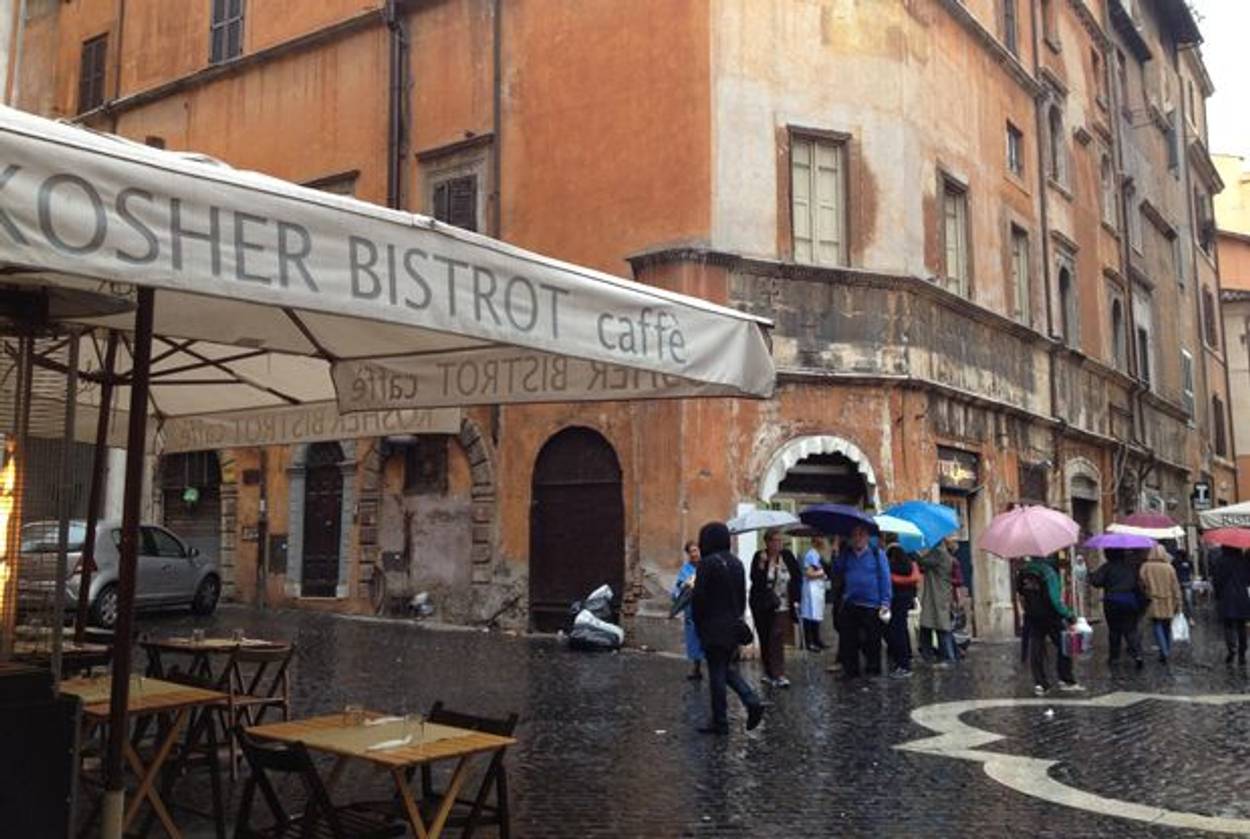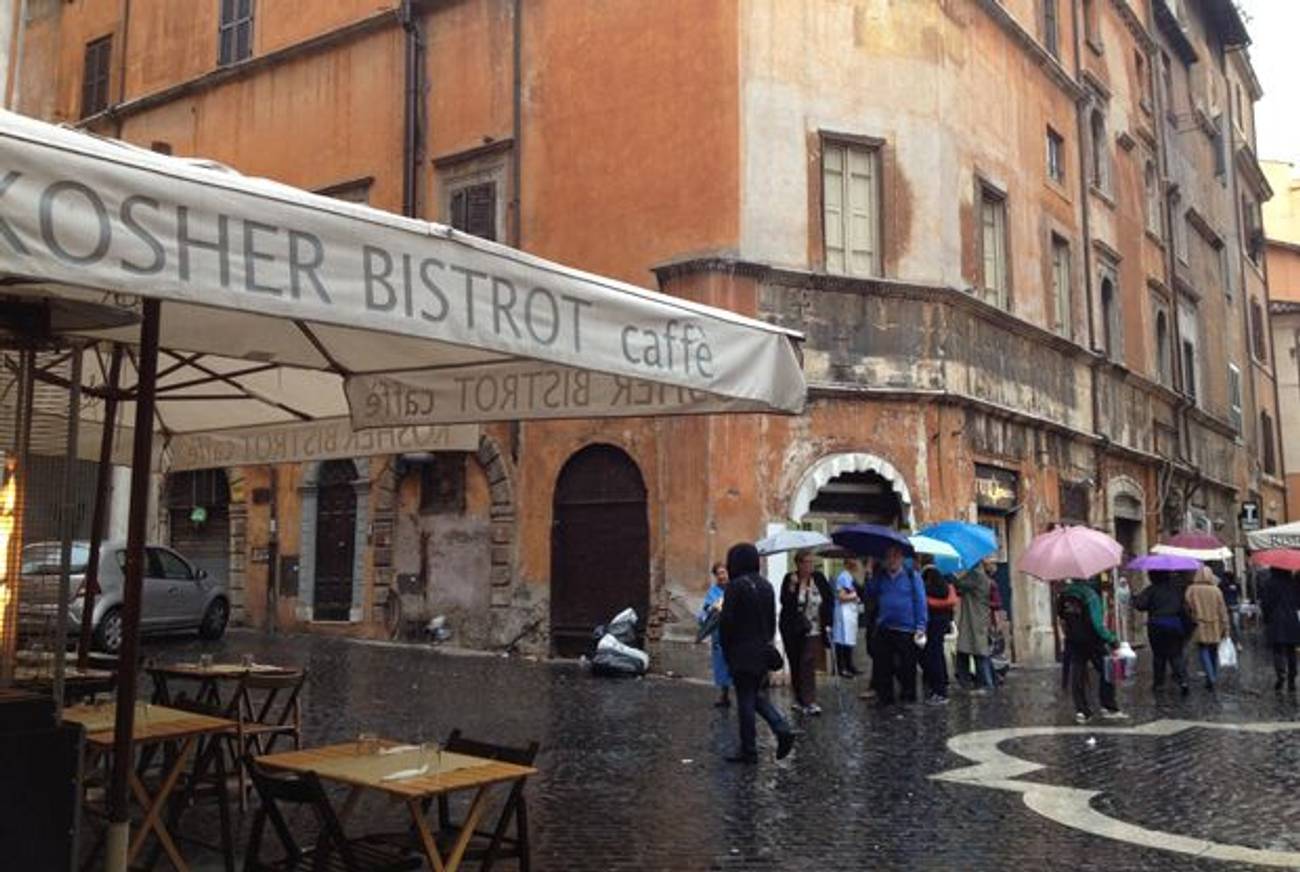A Thanksgiving Pasta Inspired by Roman Jews
Calvin Trillin’s Spaghetti alla Carbonara gets a kosher makeover




It’s been 32 years since Calvin Trillin’s famous proposal, in the New Yorker, that Spaghetti alla Carbonara replace turkey as our national Thanksgiving dish. After all, Trillin argued, the Indians could have brought it to that first Thanksgiving dinner (their ancestors having learned how to make it from Christopher Columbus).
In the intervening years, the Carbonaristas have not abandoned the cause. Last Thanksgiving, the New York Times published Ian Fisher’s account of attempting to master this seemingly simple Roman dish, which, at its most basic—and therefore, its best—involves a sauce of eggs enhanced with some form of bacon (usually guanciale or pancetta), and, on top of that, Pecorino Romano cheese.
Which means it’s off-limits even to the most devout Trillin followers if they also follow Jewish dietary laws. So definitely not kosher for Thanksgiving, especially this year, when Thanksgiving and Hanukkah align for an Age of Aquarius moment of unprecedented commercial and culinary creativity.
In the spirit of Thanksgivukkuh, therefore, I propose Spaghetti alla Carbonara alla Giudea (Jewish-style), an actual dish now offered in some of the kosher and ‘kosher-style’ restaurants that have popped up in Rome’s Jewish ghetto neighborhood in recent years—the first new development in ages in the long and fruitful culinary relationship between Roman Jews and their neighbors.
Jews have lived—and, of course, cooked—in Rome since the second century B.C., borrowing and reinventing recipes and ingredients, as Jews around the world often did, from the surrounding food culture.
“Many dishes were born of frustration,” Umberto Pavoncello, a seventh generation Roman Jew, told me recently when I visited his restaurant, Nonna Betta, named for his grandmother, on the ghetto’s busy Via del Portico d’Ottavia. “They couldn’t eat this, so they substituted that,” he said. Eventually, the community created a whole cuisine unto itself, a Giudaico-Romanesco cooking tradition that’s been enriched over the centuries by the arrival of Jews—and their recipes—from Spain and Portugal after 1492, and from other parts of the world, including, most recently, Libya.
In time, the culinary tide reversed, with ingredients that were originally used only by Jews, such as eggplant and fennel, migrating into the wider cuisine. Some Jewish recipes became staples of Roman cuisine, served at restaurants beyond the ghetto (even appearing on Molto Mario, Mario Batali’s TV show)—most famously, Carciofi alla Giudea, or deep-fried whole artichokes; Aliciotti con l’Indivia (fresh anchovy fillets baked with curly endive); and Concia (a sublime fried, then marinated, zucchini or eggplant dish).
But with the recent emergence of the ghetto as a major attraction for tourists and locals alike, the tide has turned yet again. Innovative chefs have come up with Jewish interpretations of Rome’s three most legendary pasta dishes, all of them guanciale—or pancetta—infused. Pasta alla Gricia and All’Amatriciana actually originated elsewhere in the Lazio region, but Carbonara is echt Roman, said to have resulted from the fortuitous union of pasta with the bacon and powdered eggs brought by American troops who liberated Rome in 1944. (Elizabeth David’s recipe for “Maccheroni alla Carbonara” in her 1954 Italian Food was likely its first cookbook appearance.)
So what do Rome’s Jewish chefs substitute for the forbidden bacon? Carne Secca, for one thing—that is, the heavily salted-and-peppered dried beef, processed at home or commercially using the age-old methods of Roman Jewish cooks, including Nonna Betta herself. But for years Pavoncello has used zucchini to make Carbonara at home, so it was only natural for him to offer this version in his restaurant as well. I enjoyed both versions, but preferred the zucchini because, for me, the most important ingredient is actually the Pecorino Romano, and if you’re cooking kosher, the use of meat would preclude the use of cheese.
Also, how would I get real Carne Secca at home, short of curing it myself?
“If I lived in the U.S.,” Pavoncello said, “I’d use pastrami.”
It’s not a bad idea, but I think the zucchini version is better for Thanksgivukkuh—not least because, unlike its meat counterparts, it’s still great as leftovers.
One caveat before you embark on your Carbonara adventure: during the final, all-important step in making any version of this dish, DO NOT let the egg mixture cook beyond the dense and creamy stage As Pavoncello put it, “An overcooked Carbonara is a frittata. And you don’t want a frittata!”
Elin Schoen Brockman has written for the New York Times, Hadassah Magazine, and other publications. She is currently working on a novel.